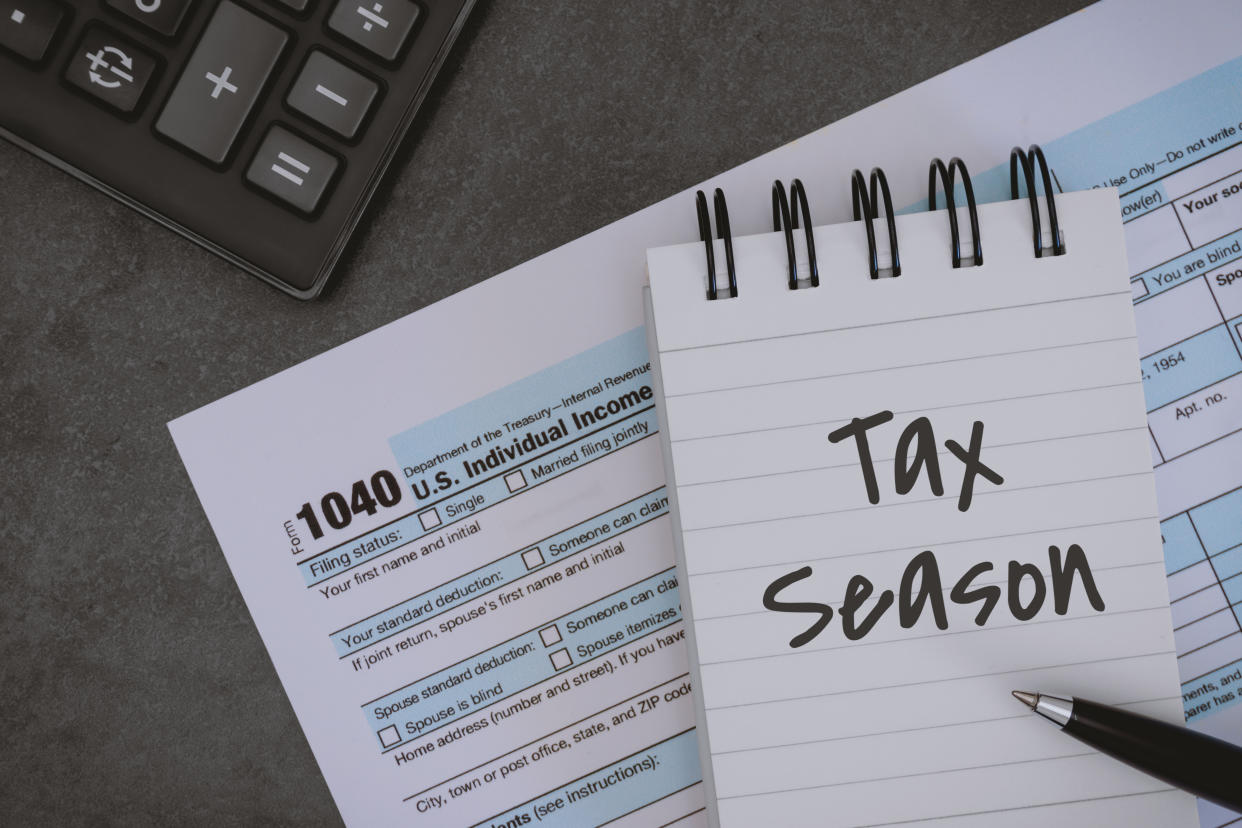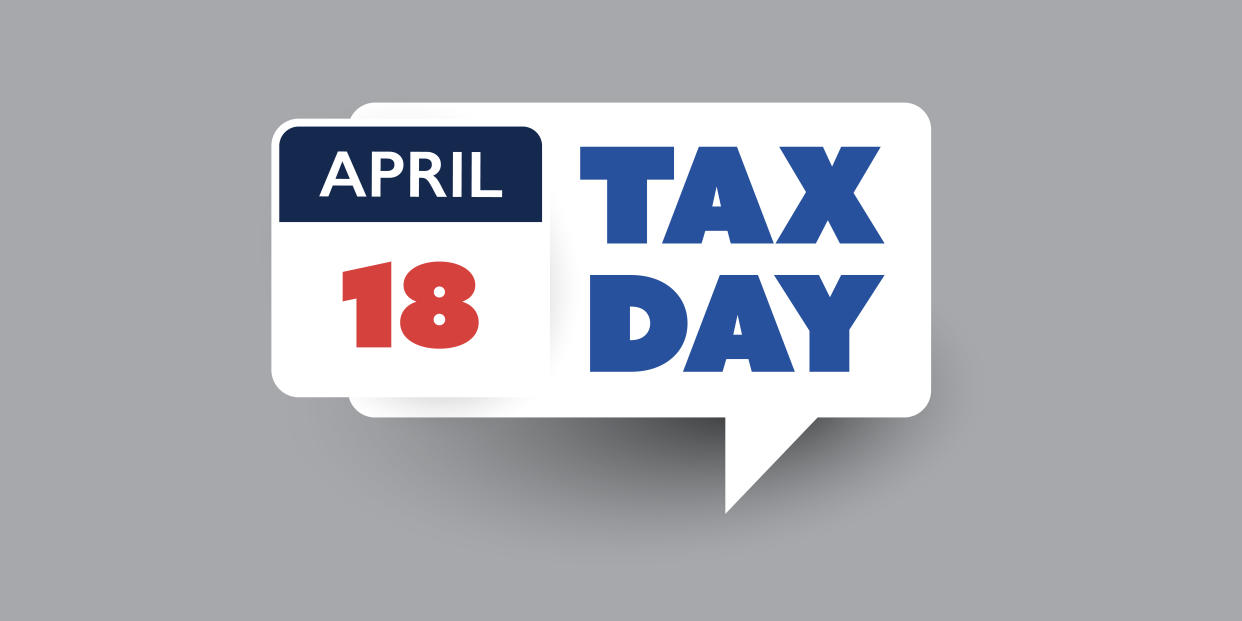Some of this year's biggest tax changes are those tax breaks you won't get — after pandemic-era credits expired.
But the Inflation Reduction Act is ushering in a pair of tax benefits for environmentally-minded Americans. Also new this filing season: the expiration of a homeowner deduction, potential double taxation for some remote workers, and the deadline for federal returns. One intended change that would have likely led to confusion was dumped late last year before it took effect.
Taxpayers should avoid feeling overwhelmed by the changes by focusing on only those that affect their returns and leave the rest to the tax pros.
“The tax code as a whole is too large to keep up with every change, so my advice to taxpayers is to know their own tax code,” Adam Brewer, a tax lawyer and founder of AB Tax Law APC, told Yahoo Finance. “Review your 2021 tax return and use that as a framework for what information and documents you need to gather for your 2022 taxes. Then think back through 2022 to recall any events you suspect will impact your tax return.”
Here are the changes that could affect you this year.
Say goodbye to pandemic-era tax credits
The last two years included temporary changes to the tax code as a response to the pandemic and the economic havoc it wrought. In the 2022 tax year, many of those tax breaks expired.
No stimulus checks
No new stimulus checks were issued in 2022 — also called Economic Impact Payments. That means taxpayers don’t have to worry about receiving letters from the IRS confirming the amount in stimulus checks they received to file taxes. They also can’t claim a Recovery Rebate Credit.
Key credits return to 2019 levels
The amounts of the Child Tax Credit (CTC), Earned Income Tax Credit (EITC), and the Child and Dependent Care Credit return to pre-COVID levels.
The enhanced CTC was not extended and returns to $2,000 per child dependent for the 2022 tax year, down from $3,600 last year. The other big change to the CTC is that it’s no longer refundable. That means taxpayers won’t receive the full credit if it’s larger than the tax they owe.
The maximum amount that single filers with no children can get from the EITC is $500, down from $1,500 last year when the credit’s income thresholds were temporarily expanded.
Similarly, the Child and Dependent Care credit — which includes out-of-pocket expenses for child care and day camps — is worth up to $2,100 for the 2022 tax year, down from $8,000 for the 2021 tax year.
Charitable deductions must be itemized
For taxpayers this year filing their 2022 tax returns, any charitable contributions must be itemized using the Schedule A form to get a deduction. That’s a big change from the last two years when the IRS offered an above-the-line deduction for contributions.
In 2020 the CARES Act allowed single filers and married couples filing jointly to deduct up to $300 in charitable donations without having to itemize their return. Married filing separately taxpayers could deduct up to $150. In 2021, the deduction was expanded, with single filers and those married filing separately getting up to $300 and joint filers deducting up to $600.
Say hello to Inflation Reduction Act tax breaks
The Inflation Reduction Act signed into law in August of last year provided a few new tax breaks that filers could take advantage of in the 2022 tax year.
Increased credit for solar energy products
The act increased the Residential Clean Energy Credit. You can now subtract 30% of the installation costs for solar heating, solar electricity (such as panels), and other solar products for the home, up from 26%. There is also no cap on the credit or income limitations.
Additionally, the act removed the principal residence restriction, meaning homeowners who installed solar products on second or vacation homes are also eligible for the credit.
Eligibility for electric vehicle (EV) Tax Credit
Consumers who bought a new electric vehicle (EV) are eligible to receive the Qualified Plug-in Electric Drive Motor Vehicle Credit with a maximum $7,500 depending on the capacity of the battery.
That hasn’t changed, but those who bought the vehicle between Aug. 17, 2022 and Dec. 31, 2022, must show that the vehicle underwent final assembly in North America to qualify. That requirement doesn’t apply to vehicles purchased earlier in 2022 when the act wasn’t signed.
“For the EV credits, 2022 is a done deal,” Robert S. Seltzer, C.P.A./P.F.S. at Seltzer Business Management, Inc. told Yahoo Finance. “Taxpayers will need to confirm that the vehicle they purchased qualifies for the credit and for the correct amount.”
If the credit was taken at the time of purchase at the dealership, then taxpayers will be ineligible for the credit on their tax return.
Mortgage insurance premium deduction expired
Homeowners who pay a mortgage insurance premium or for private mortgage insurance can no longer deduct this on their itemized taxes. Lenders generally require mortgage insurance as protection from default for homeowners who put less than 20% down when purchasing a home.
The deduction — which was enacted under Section 419 of the Tax Relief and Health Care Act of 2006 and extended annually — was not renewed for the 2022 tax year and is no longer available to be itemized.
Remote workers could face double taxation
Some employers continued remote and hybrid work into 2022. If your employer is outside the state where you worked remotely, there may be tax implications on your state taxes.
In 2020 and 2021, some states enacted temporary relief provisions to avoid double taxation of income by two states — that state where your employer is located and the state where you worked from — but many of those provisions expired for the 2022 tax year.
“Four states — Delaware, Nebraska, New York, and Pennsylvania — have a ‘convenience rule’ while Connecticut has a ‘retaliatory’ convenience rule levied only against those who reside in other states with their own convenience rule,” Jared Walczak, vice president of state projects at the Tax Foundation, told Yahoo Finance. “Workers unfortunate enough to work remotely while assigned to an office in New York or another state with a convenience rule may find themselves double taxed [and] without the opportunity to claim a credit for taxes paid to other states.”
Tax day
This typical tax deadline is April 15. Not so this year. The deadline this year to file your federal returns is Tuesday, April 18. That’s because April 15 falls on a Saturday and the next business day — Monday, April 17 — is a local holiday in the District of Columbia that the IRS observes.
Victims of severe storms in California, Georgia and Alabama storm victims have until May 15 to file their returns.
A change that didn’t make it
The American Rescue Plan Act of 2021 required third-party payment networks like PayPal and Venmo to send taxpayers Form 1099-K if they received third-party payments for goods and services that exceeded $600. The previous threshold was $20,000 with over 200 transactions.
The new rule was supposed to go into effect for the 2022 tax year.
But many tax professionals worried that many taxpayers would receive these forms for money they received from friends and relatives as personal gifts or as a way of splitting restaurant bills. That would not be taxable income and could cause major confusion.
At the end of 2022, the IRS delayed implementation.
“Thankfully, the IRS put the lower 1099-K reporting threshold on pause,” Seltzer said. “It is not $600; the threshold remains at $20,000.”
Ronda is a personal finance senior reporter for Yahoo Finance and attorney with experience in law, insurance, education, and government. Follow her on Twitter @writesronda
Read the latest personal finance trends and news from Yahoo Finance.
Follow Yahoo Finance on Twitter, Instagram, YouTube, Facebook, Flipboard, and LinkedIn
Source: Read Full Article




